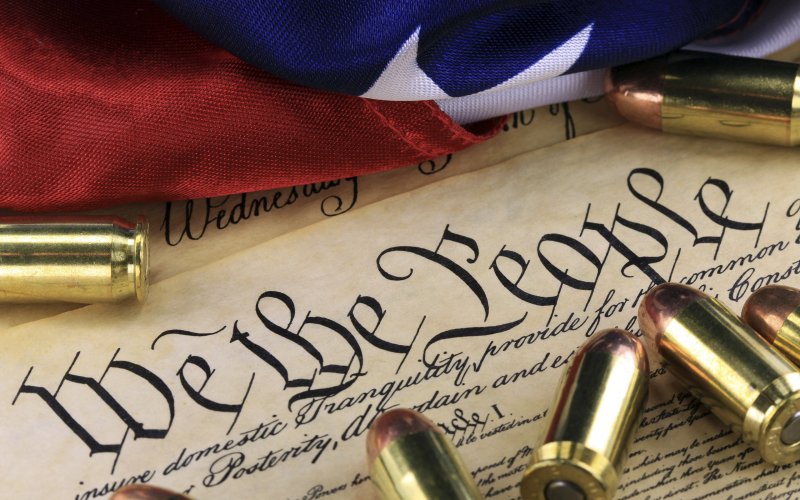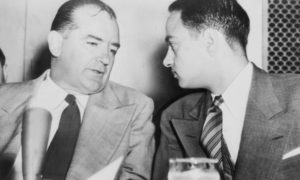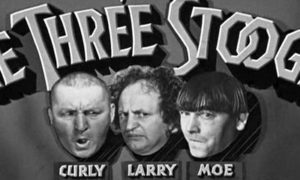Gun control is a topic that is difficult for me to talk about. I have been personally affected by mass shootings and gun violence, so I know that my opinion is biased.
When we talk about the second amendment, we have to remember the time in which it was written. Separating history from its social construction is inherently irresponsible. Our founding fathers had finished fighting a war of independence ten years before the Constitution that we now follow was written. The United States was being run under a system of government called the Articles of Confederation. These men, directly after the war for independence, were afraid of a large central government. But it was realized that we needed a stronger central government, especially if the United States was going to have any influence internationally. These men came together and created the Constitution.
But there were people who were unhappy with this change. Famously, Thomas Jefferson and Patrick Henry were distrustful of the Constitutional Convention. Those who supported the new constitution were called Federalists, and those who opposed this new constitution were called Anti-Federalists. To get to the short version, for the Constitution to pass, a promise was made to amend this new constitution afterward giving Americans their “Bill of Rights.”
The Second Amendment is the one in discussion here.
A well regulated militia being necessary to the security of a free state, the right of the people to keep and bear arms shall not be infringed.
This seems pretty straight forward. A militia is a citizen army. It was believed that a man was best served protecting his home himself and the Continental Army was quickly disbanded after the Revolutionary War. Back in the 1780’s and 1790’s, large standing armys were distrusted, influenced by the Founding Father’s experience with the British. It was realized with the wars and battles with the Native Americans that a standing Army was needed for that purpose, and the Legion of the United States was formed in 1791, becoming the United States Army in 1796.
For the first 150 years of its existence, the United States Army was demobilized in peace time and a small group of soldiers were kept to hold forts, do engineering work, and construction work. During wartime, the Army asked for volunteers and when there weren’t enough men there was a draft. The state militias could, at any time, be called to work with the United States Army.
Currently we have the Regular Army (these are your career soldiers), Army Reserves (we’ve heard the commercials ‘one weekend a month, two weeks a year), and the Army National Guard” (this is our modern day militia). Until 1903 the National Guard was considered a state army but now hold a duel role of being a state army and being able to be activated by the president, which puts them on the same level as Reservists.
I make this point because when the Second Amendment was written, it was written with the idea of protecting one’s home and family from outside forces, and internal as well. It was written by men who did not want the United States to have a large standing Army.
I cannot pretend to speak for the Founding Fathers. They are all dead and gone and we live in a new time with new technology and new fears. In American history when the Supreme Court has heard cases dealing the the Second Amendment, they have held the Second Amendment to an individual rights model. The most important Second Amendment cases are United States v. Miller, (1939); District of Columbia v. Heller (2008); and McDonald v. Chicago (2010).
United States v. Miller held that gun ownership was an individual right, such as free speech. This ruling was made considering that the definition of militia, especially at the time of the founding, was a man who could supply his own gun and ammunition. In District of Columbia v. Heller, the court ruled that the right to bear arms is an individual constitutional right, although like other rights isn’t unlimited. States have the right to prevent felons or the mentally ill from carrying weapons, but that laws that require trigger locks or for weapons to be dissembled in the home are unconstitutional since those laws go against the purpose of the right.
Scalia said in the majority opinion, “Like most rights, the right secured by the Second Amendment is not unlimited … Although we do not undertake an exhaustive historical analysis today of the full scope of the Second Amendment, nothing in our opinion should be taken to cast doubt on longstanding prohibitions on the possession of firearms by felons and the mentally ill, or laws forbidding the carrying of firearms in sensitive places such as schools and government buildings, or laws imposing conditions and qualifications on the commercial sale of arms.”
McDonald v. Chicago stated that the Heller decision applied to the states as well, not just the federal government.
So the Supreme Court has already stated that citizens of this country have the right to keep weapons lawfully for self-defense and hunting and that states have the right to restrict weapons in specific zones. States also have the right to restrict gun ownership to felons and the mentally ill.
Why is it difficult to pass a bill saying people on the terrorist watch list can’t buy weapons? Because of the lack of due process. Felons, people determined mentally ill have all had their day in front of a judge. Those on the terrorist watch list have not. Unless a bill is passed saying those on the terrorist watch list are allowed due process, I don’t see the Supreme Court finding any bill such as that constitutional.
What can be done? We can ban weapons not used for home defense or hunting. The Supreme Court has clearly said the Second Amendment is meant to protect homes, and for hunting. I don’t know else there is, that is constitutional.





















